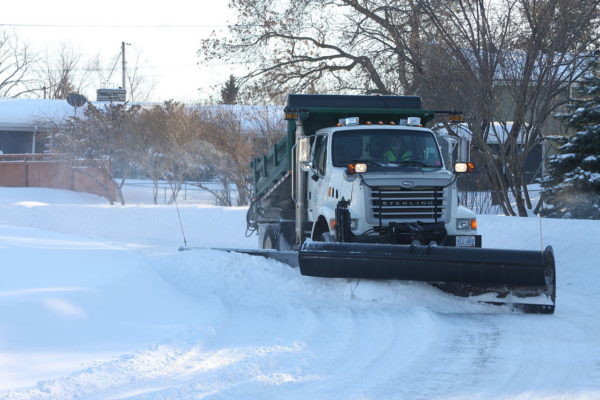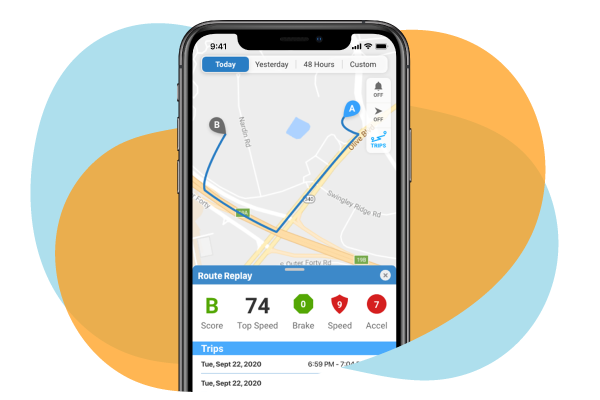
By Jana Rhodes / Posted November 25, 2014
Winter Driving Safety Part I: Driving in Extreme Weather Conditions
Old Man Winter is back and he wants to show us what he’s made of this year! Much of the U.S. has already felt temps below freezing, and if you live anywhere from the North to the Midwest, chances are, you’ve already experienced your first snow of the season. Whether you enjoy the beauty and fun of the fresh fallen snow, or you’re counting the days till your next summer barbecue, it’s important to remember the dangers winter weather can pose – especially on our roadways.
Winter road conditions can challenge even the best drivers, but can be particularly dangerous for those lacking experience. At MOTOsafety, our mission is to help keep you and everyone you love safe behind the wheel. We’ve created this three-part guide, Winter Driving Safety, to help you do just that.
This first of three articles in our Winter Driving Safety Series focuses on the act of driving in winter weather and the importance of practicing winter driving with teens or other relatively new drivers. Please take a moment to review these points with all of the drivers in your household.
Stats on Winter Driving
According to the Federal Highway Administration:
- Roughly 117,000 Americans are injured and more than 1,300 are killed in winter-weather-related car accidents each year.
- 24% of U.S. car accidents occur in icy, snowy, or slushy conditions; 15% happen during actively falling snow or sleet.
- 70% of the U.S. population lives in areas that receive 5 or more inches of snowfall annually.
- Teen drivers are more likely to be involved in an automobile accident than drivers in any other age group. Elderly, or senior drivers, are the second most likely group to be involved in a crash.
Difficult winter driving conditions include:
- Varying levels and textures of snow and slush, sleet and freezing rain,
- Wet roadways that quickly to ice as temperatures fall,
- Hard to spot, or “black” ice,
- Heavy winds,
- Limited visibility due to heavy precipitation, blowing snow, frozen or frost-covered windows, and/or glares from bright sunlight on snow and ice-covered landscapes.
Road conditions can also change quickly in winter, so drivers need to be aware of situations and surroundings, and be prepared to react more quickly than in other driving scenarios. Extreme temperatures may also impact vehicle function.
Inexperience and driving too fast are two of the most common reasons that drivers, particularly new drivers, are involved in weather related car accidents.
The Three Ps
The National Highway and Traffic Safety Administration wants you to know the Three Ps for safe driving: Prepare, Protect and Prevent!
Prepare
- Make sure your vehicle is well maintained and ready for winter driving. (See Part II of our blog series, Winterizing Your Car).
- Completely clear all windows, external mirrors, and lights of ice and snow before you drive.
- Have a plan and stock an emergency survival kit should a situation occur.
- Check weather forecasts and plan at least two possible routes before heading out.
- Gain experience: Practice driving in all weather conditions.
Protect
- Always wear your seatbelt and make sure your passengers do, too. Don’t move the car until everyone is buckled and ready.
- Anyone traveling with infants or children should be sure car seats are properly installed. Car seats should never be installed in the front seat, and kids under the age of 12 are safer riding in the back seat as well.
- Make sure your exhaust pipe is clear of snow or other substances and avoid idling for excessive periods with the windows up or in enclosed spaces.
Prevent
Prevent avoidable accidents:
- Be familiar with your vehicle and how it handles.
- Never exceed the posted speed limit. Reduce speed in wet or frozen conditions.
- Never drive under the influence of drugs or alcohol. Use caution when taking prescription medications and don’t drive if the medication causes drowsiness or other impairments.
- Don’t drive if you feel overly tired.
- Avoid distractions – no texting or other use of electronic devices.
- Be aware: Pay attention to nearby vehicles, pedestrians, and other surroundings.
Teens Should Practicing Driving in All Weather Conditions
Winter weather may present a tricky situation for drivers, but it can also present an opportunity – a chance to teach teens and new drivers a new and important driving skill.
As we sited at the beginning of this post, 70% of the U.S. population live in areas prone to regular snowfall. Anyone who needs to drive in winter weather conditions should know how to do so safely and effectively. Parents or other designated driving teachers can take advantage of mild to moderately ice-, snow-, or slush-covered parking lots or side roads and help those new to driving gain experience maneuvering and maintaining control of their vehicle in winter weather.
New drivers should practice:
- Everyday driving maneuvers such as accelerating, braking, and turning on snow and ice;
- How to handle their car when it begins to slide – steering into a skid, how and when to apply brakes;
- Stomping antilock brakes vs. pumping non-antilock brakes;
- Driving in different lighting and visibility conditions: Driving as snow is falling, in bright sunlight on snow and ice, and in the dark when ice can be more difficult to see.
Young and new drivers should also understand the need to reduce speed and increase the distance between vehicles in wet and wintery road conditions.
MOTOsafety subscribers can use driving data from the MOTOsafety Safe Driving Coach to provide continuous feedback and facilitate ongoing conversation on vehicle handling and driving behaviors including speed, rapid acceleration and harsh braking.
New drivers should always practice driving in a safe setting and in the company of an experienced driver.
Stock an Emergency Survival Kit
We hope you never find yourself stranded on the side of the road, but if you do, you’ll want to be prepared. Every driver should have an emergency kit stashed in the trunk of his or her car at all times. Maybe you can get yourself moving safely again, but if not, make sure you have the essentials to get you through until help arrives. So grab a spare gym bag and toss in the following:
- Ice scraper
- Extra windshield fluid/de-icer
- Engine Coolant
- A quart of oil
- Long jumper cables
- A flashlight
- Road flares
- A small shovel
- A blanket
- Extra clothes – a sweatshirt or sweater, long pants, a coat, and snow-friendly footwear
- Bottled water
- Non-perishable snacks
- Cell phone car charger
- Also be sure you always have a properly inflated spare tire and the right tools to change a flat, if necessary.
- You may also consider keeping abrasive material such as sand or kitty litter in your vehicle, in case you get stuck in snow or ice.
If your vehicle does become stuck or stalled away from a populated area, don’t over exert yourself.Stay with your car. Use flares if possible and/or place brightly colored “flags” on your antenna and/or out windows to alert other drivers that you need help. Use your lights as much as possible without draining battery. Conserve gas – run your engine periodically, just enough to keep warm. Make sure your exhaust pipe is clear of snow or other potentially blocking materials or substances when the vehicle is running.
If your vehicle is equipped with MOTOsafety, make sure your device is plugged in. Turn the car on and share your exact GPS location with a family member who can assist.

- Installs in seconds
- Rates driver performance
- Monitors safe driving behaviors
- Shows location in real time
- Generates alerts for speeding and more
- Signals unauthorized usage

Next Post
Winter Driving Safety Part II: Winterizing Your Car
November 26, 2014It’s always a good idea to make sure your family vehicles are in top working order. With proper winterization and maintenance, cars handle better on…
Previous Post
National Teen Driver Safety Week
October 19, 2014Shining the Spotlight on the Dangers Teen Drivers Face, and How You Can Help. The terrible truth – motor vehicle crashes are the leading cause of…


